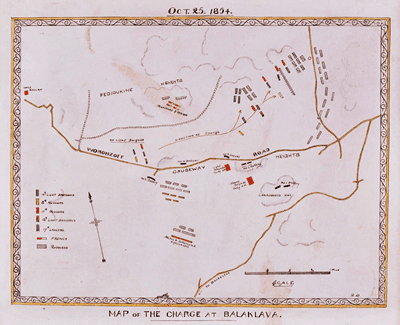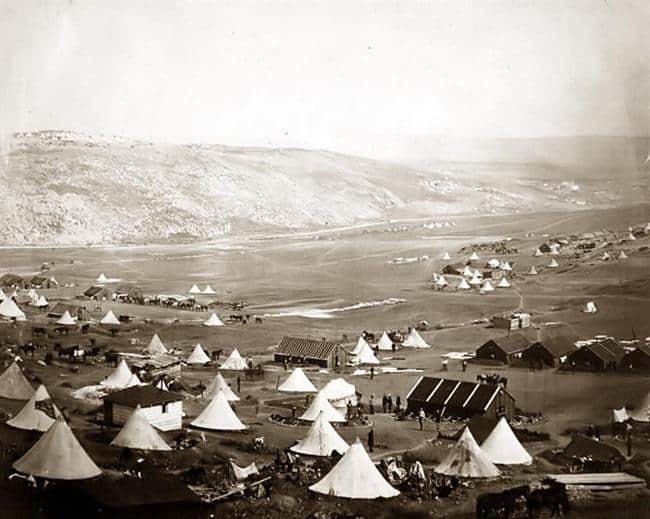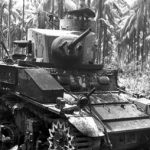The Crimean War, the most destructive of the Victorian era, was notable for the appalling suffering of the troops, the outmoded and inefficient military organisation and the recognition at last of the courage of all ranks of soldiers and sailors with the instigation of the Victoria Cross.
It is remembered for the unreasoning courage of the Charge of the Light Brigade, for the precise volleys of the Thin Red Line and the impossible assaults upon Sevastopol’s Redan.
It also demonstrated the inefficiency and ineffectiveness of the British military system based on privilege and purchase.
Alma, 20 September 1854
The 4th (Queen’s Own) Light Dragoons and the 8th King’s Royal Irish Hussars were both present at this battle.
The 4th were grouped with the 4th Division in reserve whereas the 8th was with the rest of the Light Brigade on the left flank.
The actual battle was an assault by the infantry over the River Alma and up onto the overlooking hills, throwing back a numerically superior force of Russians.
The cavalry were mere spectators to the conflict.
In October, Balaklava and the Charge of the Light Brigade took place. It was started when 25,000 Russians tried to capture Balaklava, the British Army’s only port, defended by the 93rd Highlanders, some Turks, and the Light Division.
Balaklava, 25 October 1854
The 4th (Queen’s Own) Light Dragoons and the 8th King’s Royal Irish Hussars both fought in this, the most famous of all cavalry actions: The Charge of the Light Brigade.
Lord Raglan, The Commander-in-Chief, wished Lord Lucan, the cavalry commander, to prevent the Russians from removing the guns that they had captured on the Causeway Heights.
Owing to inaccurate passage of information and a difference of perspective, Lucan ended up ordering Lord Cardigan to use his Light Brigade to capture an entirely different objective: the Russians guns at the other end of the valley, a mile and a half away.

The Brigade set off in impeccable formation, the 4th and the 8th as the second line behind the 11th Hussars, 17th Lancers and the 13th Hussars, all the way enduring heavy fire from the guns on both sides of the valley and, when in range, those of their objective.
Each line in turn crashed onto and through the position, clashing with the massed ranks of the enemy’s cavalry beyond the guns.
The 4th, under Lord George Paget, remained on the guns and finished off the artillerymen, until a large body of Lancers was observed coming down to cut them off so, together with the 11th Hussars, Paget wheeled them about and they managed to brush past the enemy and start the long return journey.
The 8th, under Colonel Shewell, charged through the position into the enemy cavalry beyond before turning in perfect formation and driving off a force of Cossacks that were threatening their flanks.
Of the 118 men of the 4th that started the charge only 39 returned, and of the 104 men of the 8th only 38 came back: in all 409 of the 607 men in the Light Brigade were either killed or missing.
In the course of the battle the Colonel’s “Rollicking Orderly,” Samuel Parkes, was among the missing. At the time of the charge, Crawford was the Colonel’s trumpeter.
After the charge on the Russian Lancers, Crawford’s horse collapsed from exhaustion and soon afterwards Parkes’ horse was shot. Parkes began to make his way back on foot when he saw Crawford, who had lost his sword in his fall, about to be attacked by two mounted Cossacks. Parkes at once ran to Crawford, stood in front of him, fought back against the two Cossacks and drove them off.
The two men then started to run up the valley and were joined by Private John Edden, also of the 4th, whose horse had also been shot. Soon they came across Major Halkett, lying seriously wounded.
They were preparing to pick Halkett up when some Cossacks began to ride towards them. Halkett told the men to put him down and save themselves, but to put his sword into his hand before they went. Parkes turned and faced the Cossacks, whilst the other two tried again to lift Halkett.
A Russian officer rode up and said to Parkes in English, “Give yourself up, and you won’t be hurt.” Parkes refused and one of the Russians fired his pistol and wounded Parkes in the right hand.
The three of them began to run off. Edden got away but Parkes and Crawford were caught. As they were being taken back they saw that Halkett had died.
Private Parkes was awarded the Victoria Cross for his conduct.
Inkerman, 5 November 1854
The 4th (Queen’s Own) Light Dragoons and the 8th King’s Royal Irish Hussars were both still in the Light Brigade during this battle, however, it was temporarily under the command of Lord George Paget, Colonel of the 4th, as Lord Cardigan was out on his private yacht in the harbour.
The Brigade was ordered to advance in support of the Chasseurs d’Afrique, but Inkerman was a vicious infantry battle and the cavalry was held in reserve throughout.
Sevastopol, 1855
The siege of Sevastopol was finally ended after a three-day bombardment which started on 5 September 1855.



